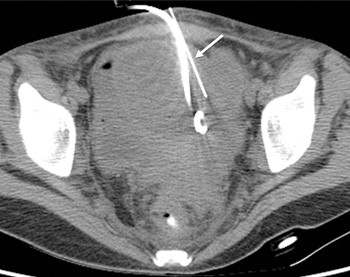July 24, 2015 – The use of computed-tomography (CT)-guided transgluteal drainage of deep pelvic abscesses has few complications and is effective for use general hospitals, according to a recent study1 published in Clinical Radiology.
For most pelvic abscesses, percutaneous, image-guided drainage is the treatment of choice. The authors of the study sought to verify that the technique could be used for draining deep pelvic abscesses using low anterior abdominal wall, transgluteal, per rectal or per vaginal approaches.
In the study, researchers reviewed cases of 12 patients, with the mean age of 59, who had 15 transgluteal drainages. Half of the patients had a pelvic collection following surgery, while other patient conditions involved a perforated duodenal ulcer, perforated appendicitis, perforated gall bladder, perforated colon at colonoscopy and recurrent pelvic sepsis of unknown cause. Drainage took eight days on average, but ranged from 3–16 days. There were no periprocedural complications or deaths, there was no required subsequent surgery, and this was the definitive procedure for the 12 patients with deep pelvic abscess.

Image: Axial CT image from drainage procedure in a 16-year-old patient with Crohn's-related abscess using tandem trochar technique (arrow).2
Based on the results, the authors concluded that CT guided, percutaneous transgluteal drainage of deep pelvic abscesses is a straightforward procedure with few complications and suitable for widespread usage in district general hospitals.1
Reference:
- Chin MC, Maclennan A. CT guided percutaneous transgluteal drainage of pelvic collections is a useful procedure for a radiologist in a district general hospital. Clinical Radiology. September 2015.Volume 70, Supplement 1, Page S5. http://dx.doi.org/10.1016/j.crad.2015.06.021.
- Role of Percutaneous Abscess Drainage in Young Patients with Crohn’s Disease. Radiology Rounds. http://www.massgeneral.org/radiology/news/radrounds/march_2015/.




